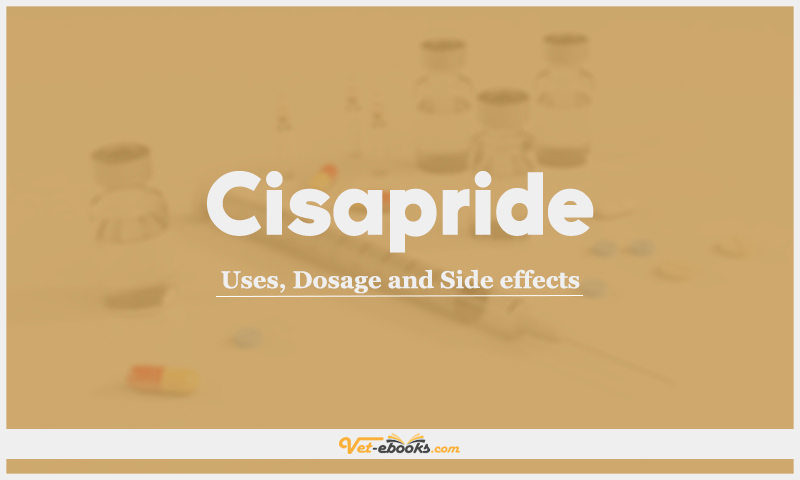Cisapride: Uses, Dosage and Side Effects

Overview
- GI prokinetic action.
- It is acting on 5-HT4 receptors on enteric cholinergic neurons, inducing depolarization and contraction of gastrointestinal smooth muscle.
Uses of Cisapride
- Where the obstruction has been ruled out, Cisapride is potentially useful in the management of cases where there is reduced gastric motility.
- Managing constipation and megacolon in cats that are mildly or moderately affected.
- Has been shown to increase lower oesophageal sphincter pressure in dogs so may be of benefit in canine patients for which this is desirable.
- Cisapride also decreased the frequency of gastro-oesophageal reflux in anesthetized dogs.
Dose of Cisapride in Dogs and Cats
Dogs:
All uses:
- 0.1–0.5 mg/kg p.o. q8–12h; some recommend giving 30 minutes before feeding.
- Some sources state that gradually increasing doses up to 1 mg/kg p.o. q8h may be required (if tolerated).
Cats:
All uses:
- 2.5–5.0 mg per cat p.o. 2–3 times daily or 0.5 mg/kg 2–3 times daily.
- Dosages may be titrated upwards, if tolerated, to as high as 7.5 mg per cat p.o. 3 times daily in large cats.
Drug Dosage Calculator
You Should Give:
Side Effects of Cisapride in Dogs and Cats
Vomiting, diarrhea, abdominal pain.
Contraindications of Cisapride in Dogs and Cats
Do not use in cases of suspected gastrointestinal obstruction or perforation.
Some Notes:
- No evidence that cisapride is effective in the treatment of megaoesophagus in dogs; canine esophagus primarily striated muscle with little smooth muscle to respond to cisapride.
- Effects on motility could affect the absorption of other oral drugs so caution should be used when using drugs with a narrow therapeutic index.
- Metabolized by cytochrome P450 enzymes so use with caution if used with other medications metabolized by these enzymes (e.g. ketoconazole, itraconazole, cimetidine, amiodarone, chloramphenicol).
- Drugs such as amiodarone, procainamide, sotalol, and tricyclic antidepressants (e.g. amitriptyline) may increase the QT interval and this risk may be increased by concurrent use of cisapride.
- Use with caution in animals with hepatic or renal dysfunction; may require reduced dosing due to decreased metabolism or clearance.
Tip
Do You Want To Increase Your Veterinary Knowledge and Practical Skills?
You Can Now Browse and Download +3000 Books For Veterinary Professionals & Students Online.
Download Veterinary Books




















